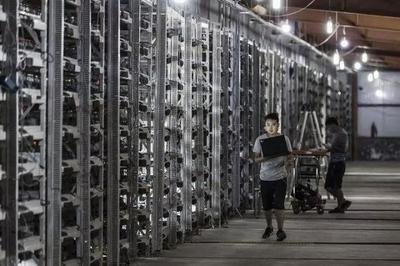In the ever-evolving landscape of cryptocurrency mining, where innovation and efficiency are the twin pillars of success, the Whatsminer M70S stands out as a beacon of engineering excellence. This powerful mining rig, crafted by MicroBT, has garnered attention for its robust performance and energy-conscious design. As the crypto world buzzes with debates over sustainability and profitability, exploring the power consumption of the M70S offers valuable insights into how modern miners can balance high hash rates with environmental responsibility. From Bitcoin enthusiasts to those dabbling in Ethereum or Dogecoin, understanding this aspect could redefine strategies in digital asset extraction.
Dive deeper, and the Whatsminer M70S reveals a masterpiece of hardware optimization. Boasting a hash rate that rivals industry leaders, this miner operates with a precision that minimizes waste while maximizing output. Power consumption, often the Achilles’ heel of mining operations, is meticulously engineered in the M70S. At its core, it draws approximately 3,310 watts under full load, a figure that might seem daunting at first glance but translates to impressive efficiency when measured against its hashing power of around 238 terahashes per second. This balance is crucial in a market where electricity costs can make or break profitability, especially for those hosting rigs in specialized mining farms.
Consider the broader implications for popular cryptocurrencies like Bitcoin (BTC). The M70S is particularly optimized for SHA-256 algorithms, which are the backbone of BTC mining. In an era where network difficulty skyrockets and rewards halve, miners need every edge to stay afloat. Here, the M70S shines by converting electrical input into computational output with remarkable efficacy, potentially reducing operational costs by up to 20% compared to older models. Imagine rows of these rigs humming in a vast mining farm, their synchronized efforts yielding blocks of BTC amidst the digital ether. Such scenarios underscore the device’s relevance, making it a staple for serious miners chasing the elusive golden nonce.

Shifting gears to other assets, the adaptability of the M70S extends beyond BTC. While primarily designed for Proof-of-Work chains like Ethereum (ETH) before its shift to Proof-of-Stake, enthusiasts have explored its utility in multi-coin setups. For Dogecoin (DOG), which shares the SHA-256 algorithm, the M70S offers a seamless transition, allowing miners to pivot based on market trends. This versatility enhances its value in dynamic environments, such as hosted mining services where users rent space in professional facilities. These services, often equipped with state-of-the-art cooling and power infrastructure, amplify the M70S’s strengths, turning potential energy hogs into lean, mean mining machines.
Yet, no discussion of power consumption would be complete without addressing the environmental narrative. As global scrutiny intensifies on crypto’s carbon footprint, the M70S responds with features like advanced thermal management and optional eco-modes that throttle power during off-peak hours. This not only extends the lifespan of the mining rig but also aligns with sustainable practices advocated by forward-thinking exchanges and communities. In mining farms dedicated to ETH or DOG, where collective efforts aim for greener protocols, such innovations foster a more responsible ecosystem. The rhythm of progress here is palpable—a dance between technology and ecology that promises a brighter future for crypto mining.
Wrapping up this exploration, the Whatsminer M70S exemplifies how engineering prowess can transform power consumption from a liability into a strategic advantage. For operators of mining rigs, whether solo enthusiasts or large-scale hosts, this device underscores the importance of informed choices in an unpredictable market. As BTC, ETH, and DOG continue to captivate investors, the M70S stands ready to power the next wave of digital gold rushes, proving that excellence isn’t just about speed—it’s about smart, sustainable speed.






















